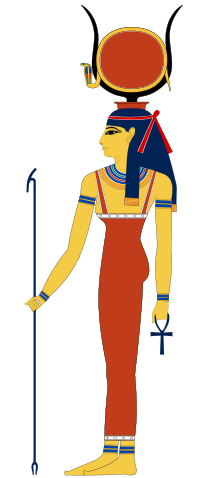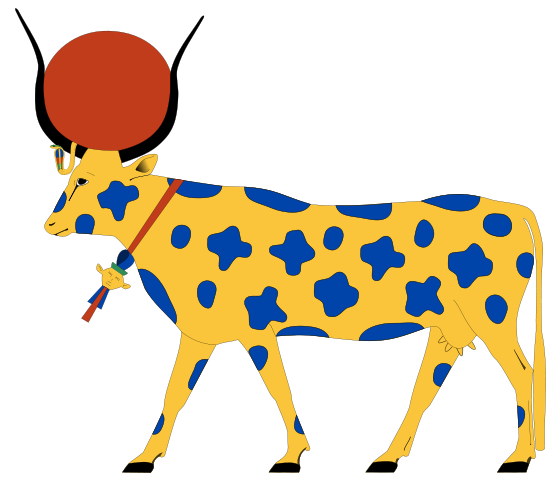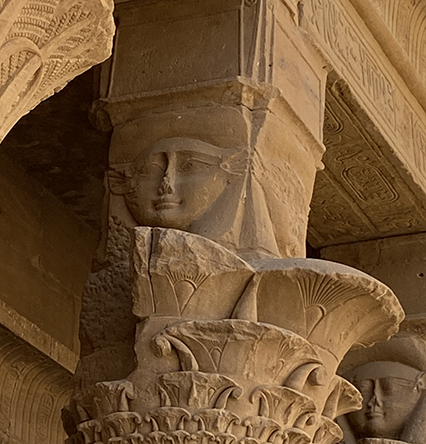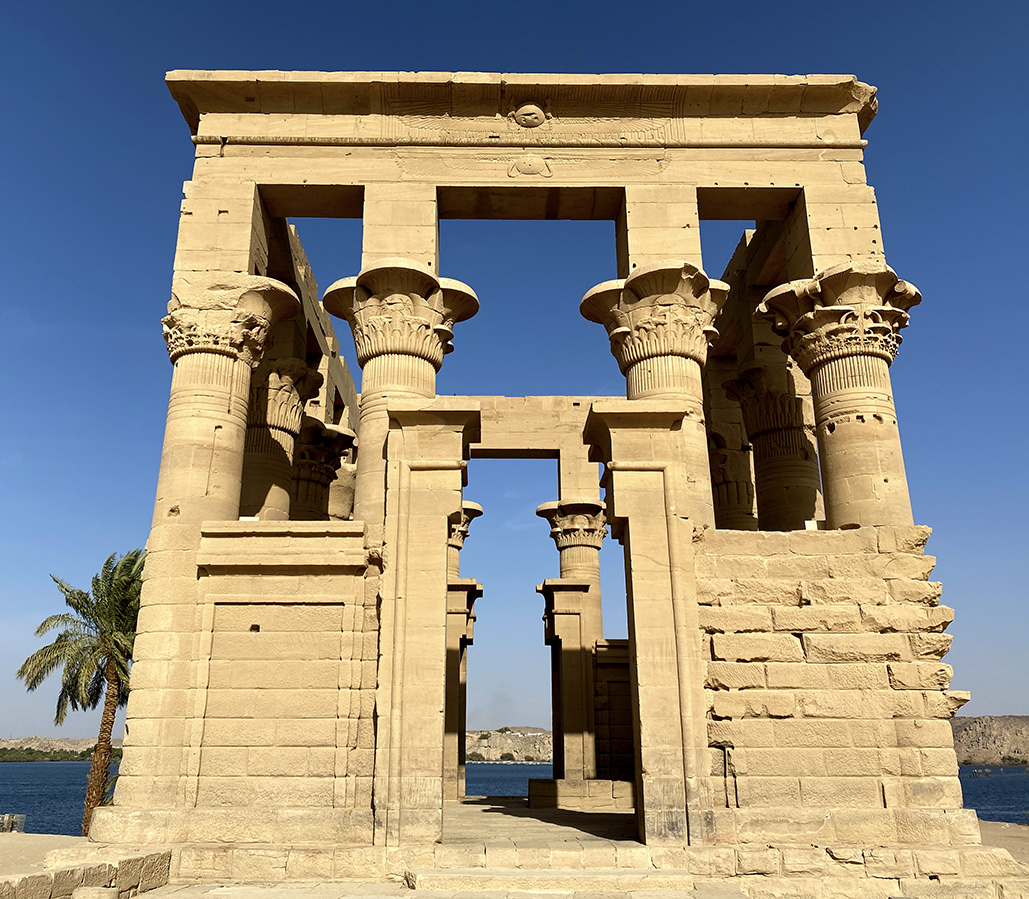Difference between revisions of "Hathor"
Occultwiki (talk | contribs) |
Occultwiki (talk | contribs) |
||
| (One intermediate revision by the same user not shown) | |||
| Line 14: | Line 14: | ||
A bovine deity with inward-curving horns appears on the Narmer Palette from near the start of Egyptian history, both atop the palette and on the belt or apron of the king, Narmer. The Egyptologist Lana Troy, however, identifies a passage in the [[Pyramid Texts]] from the late Old Kingdom that connects Hathor with the "apron" of the king, reminiscent of the goddess on Narmer's garments. | A bovine deity with inward-curving horns appears on the Narmer Palette from near the start of Egyptian history, both atop the palette and on the belt or apron of the king, Narmer. The Egyptologist Lana Troy, however, identifies a passage in the [[Pyramid Texts]] from the late Old Kingdom that connects Hathor with the "apron" of the king, reminiscent of the goddess on Narmer's garments. | ||
In the Fourth Dynasty, Hathor rose rapidly to prominence. She supplanted an early crocodile god who was worshipped at Dendera in Upper Egypt to become Dendera's patron deity, and she increasingly absorbed the cult of Bat in the neighboring region of Hu, so that in the Middle Kingdom (c. 2055–1650 BC) the two deities fused into one. The theology surrounding the pharaoh in the Old Kingdom, unlike that of earlier times, focused heavily on the sun god Ra as king of the gods and father and patron of the earthly king. Hathor ascended with Ra and became his mythological wife, and thus divine mother of the pharaoh. | In the Fourth Dynasty, Hathor rose rapidly to prominence. She supplanted an early crocodile god who was worshipped at Dendera in Upper Egypt to become Dendera's patron deity, and she increasingly absorbed the [[cult]] of Bat in the neighboring region of Hu, so that in the Middle Kingdom (c. 2055–1650 BC) the two deities fused into one. The theology surrounding the pharaoh in the Old Kingdom, unlike that of earlier times, focused heavily on the sun god Ra as king of the gods and father and patron of the earthly king. Hathor ascended with Ra and became his mythological wife, and thus divine mother of the pharaoh. | ||
==Roles== | ==Roles== | ||
| Line 34: | Line 34: | ||
===Sexuality, beauty, and love=== | ===Sexuality, beauty, and love=== | ||
Hathor's joyful, ecstatic side indicates her feminine, procreative power. In some creation myths she helped produce the world itself. Atum, a creator god who contained all things within himself, was said to have produced his children Shu and Tefnut, and thus begun the process of creation, by masturbating. The hand he used for this act, the Hand of Atum, represented the female aspect of himself and could be personified by Hathor, Nebethetepet, or another goddess, Iusaaset. | Hathor's joyful, ecstatic side indicates her feminine, procreative power. In some creation myths she helped produce the world itself. Atum, a creator god who contained all things within himself, was said to have produced his children [[Shu]] and Tefnut, and thus begun the process of creation, by masturbating. The hand he used for this act, the Hand of Atum, represented the female aspect of himself and could be personified by Hathor, Nebethetepet, or another goddess, Iusaaset. | ||
Hathor could be the consort of many male gods, of whom Ra was only the most prominent. Mut was the usual consort of [[Amun-Ra|Amun]], the preeminent deity during the New Kingdom who was often linked with Ra. But Mut was rarely portrayed alongside Amun in contexts related to sex or fertility, and in those circumstances, Hathor or [[Isis]] stood at his side instead. In the late periods of Egyptian history, the form of Hathor from Dendera and the form of [[Horus]] from Edfu were considered husband and wife and in different versions of the myth of the Distant Goddess, Hathor-Raettawy was the consort of Montu and Hathor-Tefnut the consort of Shu. | Hathor could be the consort of many male gods, of whom Ra was only the most prominent. Mut was the usual consort of [[Amun-Ra|Amun]], the preeminent deity during the New Kingdom who was often linked with Ra. But Mut was rarely portrayed alongside Amun in contexts related to sex or fertility, and in those circumstances, Hathor or [[Isis]] stood at his side instead. In the late periods of Egyptian history, the form of Hathor from Dendera and the form of [[Horus]] from Edfu were considered husband and wife and in different versions of the myth of the Distant Goddess, Hathor-Raettawy was the consort of Montu and Hathor-Tefnut the consort of Shu. | ||
Latest revision as of 04:25, 15 December 2024
Hathor (Ancient Egyptian: ḥwt-ḥr) was a major goddess in ancient Egyptian religion who played a wide variety of roles. As a sky deity, she was the mother or consort of the sky god Horus and the sun god Ra, both of whom were connected with kingship, and thus she was the symbolic mother of their earthly representatives, the pharaohs.
She was one of several goddesses who acted as the Eye of Ra, Ra's feminine counterpart, and in this form she had a vengeful aspect that protected him from his enemies. Her beneficent side represented music, dance, joy, love, sexuality, and maternal care, and she acted as the consort of several male deities and the mother of their sons. These two aspects of the goddess exemplified the Egyptian conception of femininity. Hathor crossed boundaries between worlds, helping deceased souls in the transition to the afterlife.
Hathor was praised for her beautiful hair. Egyptian literature contains allusions to a myth not clearly described in any surviving texts, in which Hathor lost a lock of hair that represented her sexual allure. One text compares this loss with Horus's loss of his divine Eye and Set's loss of his testicles during the struggle between the two gods, implying that the loss of Hathor's lock was as catastrophic for her as the maiming of Horus and Set was for them.
Origin
Images of cattle appear frequently in the artwork of Predynastic Egypt (before c. 3100 BC). Cows are venerated in many cultures, including ancient Egypt, as symbols of motherhood and nourishment, because they care for their calves and provide humans with milk. The Gerzeh Palette, a stone palette from the Naqada II period of prehistory (c. 3500–3200 BC), shows the silhouette of a cow's head with inward-curving horns surrounded by stars. The palette suggests that this cow was also linked with the sky, as were several goddesses from later times who were represented in this form: Hathor, Mehet-Weret, and Nut.
Hathor is not unambiguously mentioned or depicted until the Fourth Dynasty (c. 2613–2494 BC) of the Old Kingdom, although several artifacts that refer to her may date to the Early Dynastic Period (c. 3100–2686 BC). When Hathor does clearly appear, her horns curve outward, rather than inward like those in Predynastic art.
A bovine deity with inward-curving horns appears on the Narmer Palette from near the start of Egyptian history, both atop the palette and on the belt or apron of the king, Narmer. The Egyptologist Lana Troy, however, identifies a passage in the Pyramid Texts from the late Old Kingdom that connects Hathor with the "apron" of the king, reminiscent of the goddess on Narmer's garments.
In the Fourth Dynasty, Hathor rose rapidly to prominence. She supplanted an early crocodile god who was worshipped at Dendera in Upper Egypt to become Dendera's patron deity, and she increasingly absorbed the cult of Bat in the neighboring region of Hu, so that in the Middle Kingdom (c. 2055–1650 BC) the two deities fused into one. The theology surrounding the pharaoh in the Old Kingdom, unlike that of earlier times, focused heavily on the sun god Ra as king of the gods and father and patron of the earthly king. Hathor ascended with Ra and became his mythological wife, and thus divine mother of the pharaoh.
Roles
Hathor took many forms and appeared in a wide variety of roles.
Egyptian texts often speak of the manifestations of the goddess as "Seven Hathors" or, less commonly, of many more Hathors—as many as 362. Hathor's diversity reflects the range of traits that the Egyptians associated with goddesses. More than any other deity, she exemplifies the Egyptian perception of femininity.
Sky goddess
Hathor was given the epithets "mistress of the sky" and "mistress of the stars", and was said to dwell in the sky with Ra and other sun deities. Egyptians thought of the sky as a body of water through which the sun god sailed, and they connected it with the waters from which, according to their creation myths, the sun emerged at the beginning of time. This cosmic mother goddess was often represented as a cow. Hathor and Mehet-Weret were both thought of as the cow who birthed the sun god and placed him between her horns. Like Nut, Hathor was said to give birth to the sun god each dawn.
Solar goddess
Hathor was commonly called the "Golden One", referring to the radiance of the sun, and texts from her temple at Dendera say "her rays illuminate the whole earth." She was sometimes fused with another goddess, Nebethetepet, whose name can mean "Lady of the Offering," "Lady of Contentment," or "Lady of the Vulva."
In the funerary text known as the Book of the Heavenly Cow, Ra sends Hathor as the Eye of Ra to punish humans for plotting rebellion against his rule. She becomes the lioness goddess Sekhmet and massacres the rebellious humans, but Ra decides to prevent her from killing all humanity. He orders that beer be dyed red and poured out over the land. The Eye goddess drinks the beer, mistaking it for blood, and in her inebriated state reverts to being the benign and beautiful Hathor.
Music, dance, and joy
Egyptian religion celebrated the sensory pleasures of life, believed to be among the gods' gifts to humanity. In hymns and temple reliefs, musicians play tambourines, harps, lyres, and sistra in Hathor's honor. The sistrum, a rattle-like instrument, was particularly important in Hathor's worship. Sistra had erotic connotations and, by extension, alluded to the creation of new life.
Sexuality, beauty, and love
Hathor's joyful, ecstatic side indicates her feminine, procreative power. In some creation myths she helped produce the world itself. Atum, a creator god who contained all things within himself, was said to have produced his children Shu and Tefnut, and thus begun the process of creation, by masturbating. The hand he used for this act, the Hand of Atum, represented the female aspect of himself and could be personified by Hathor, Nebethetepet, or another goddess, Iusaaset.
Hathor could be the consort of many male gods, of whom Ra was only the most prominent. Mut was the usual consort of Amun, the preeminent deity during the New Kingdom who was often linked with Ra. But Mut was rarely portrayed alongside Amun in contexts related to sex or fertility, and in those circumstances, Hathor or Isis stood at his side instead. In the late periods of Egyptian history, the form of Hathor from Dendera and the form of Horus from Edfu were considered husband and wife and in different versions of the myth of the Distant Goddess, Hathor-Raettawy was the consort of Montu and Hathor-Tefnut the consort of Shu.
Motherhood and queenship
Hathor was considered the mother of various child deities. As suggested by her name, she was often thought of as both Horus's mother and consort. As both the king's wife and his heir's mother, Hathor was the divine counterpart of human queens.
Isis and Osiris were considered Horus's parents in the Osiris myth as far back as the late Old Kingdom, but the relationship between Horus and Hathor may be older still. If so, Horus only came to be linked with Isis and Osiris as the Osiris myth emerged during the Old Kingdom. Even after Isis was firmly established as Horus's mother, Hathor continued to appear in this role, especially when nursing the pharaoh. Images of the Hathor-cow with a child in a papyrus thicket represented his mythological upbringing in a secluded marsh. Goddesses' milk was a sign of divinity and royal status. Thus, images in which Hathor nurses the pharaoh represent his right to rule.
Afterlife
Although the Pyramid Texts, the earliest Egyptian funerary texts, rarely mention her, Hathor was invoked in private tomb inscriptions from the same era, and in the Middle Kingdom Coffin Texts and later sources, she is frequently linked with the afterlife.
Just as she crossed the boundary between Egypt and foreign lands, Hathor passed through the boundary between the living and the Duat, the realm of the dead. She helped the spirits of deceased humans enter the Duat and was closely linked with tomb sites, where that transition began. The necropolises, or clusters of tombs, on the west bank of the Nile were personified as Imentet, the goddess of the west, who was frequently regarded as a manifestation of Hathor. The Theban necropolis, for example, was often portrayed as a stylized mountain with the cow of Hathor emerging from it. Her role as a sky goddess was also linked to the afterlife. Because the sky goddess—either Nut or Hathor—assisted Ra in his daily rebirth, she had an important part in ancient Egyptian afterlife beliefs, according to which deceased humans were reborn like the sun god. Coffins, tombs, and the underworld itself were interpreted as the womb of this goddess, from which the deceased soul would be reborn.
Iconography
Hathor was often depicted as a cow bearing the sun disk between her horns, especially when shown nursing the king. She could also appear as a woman with the head of a cow. Her most common form, however, was a woman wearing a headdress of the horns and sun disk, often with a red or turquoise sheath dress, or a dress combining both colors. Sometimes the horns stood atop a low modius or the vulture headdress that Egyptian queens often wore in the New Kingdom.
Because Isis adopted the same headdress during the New Kingdom, the two goddesses can be distinguished only if labeled in writing. When in the role of Imentet, Hathor wore the emblem of the west upon her head instead of the horned headdress. The Seven Hathors were sometimes portrayed as a set of seven cows, accompanied by a minor sky and afterlife deity called the Bull of the West.
Temples
More temples were dedicated to Hathor than to any other Egyptian goddess. During the Old Kingdom her most important center of worship was in the region of Memphis, where "Hathor of the Sycamore" was worshipped at many sites throughout the Memphite Necropolis. During the New Kingdom era, the temple of Hathor of the Southern Sycamore was her main temple in Memphis. At that site she was described as the daughter of the city's main deity, Ptah.
Dendera, Hathor's oldest temple in Upper Egypt, dates to at least to the Fourth Dynasty. After the end of the Old Kingdom it surpassed her Memphite temples in importance. Many kings made additions to the temple complex through Egyptian history. The last version of the temple was built in the Ptolemaic and Roman Periods and is today one of the best-preserved Egyptian temples from that time.
The most frequent temple rite for any deity was the daily offering ritual, in which the cult image, or statue, of a deity would be clothed and given food. The daily ritual was largely the same in every Egyptian temple, although the goods given as offerings could vary according to which deity received them. Wine and beer were common offerings in all temples, but especially in rituals in Hathor's honor, and she and the goddesses related to her often received sistra and menat necklaces. In Late and Ptolemaic times, they were also offered a pair of mirrors, representing the sun and the moon.
Festivals
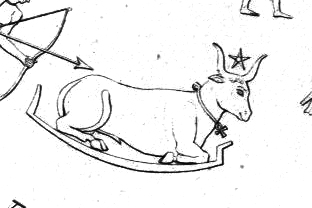
Many of Hathor's annual festivals were celebrated with drinking and dancing that served a ritual purpose. Revelers at these festivals may have aimed to reach a state of religious ecstasy, which was otherwise rare or nonexistent in ancient Egyptian religion. Graves-Brown suggests that celebrants in Hathor's festivals aimed to reach an altered state of consciousness to allow them interact with the divine realm. An example is the Festival of Drunkenness, commemorating the return of the Eye of Ra, which was celebrated on the twentieth day of the month of Thout at temples to Hathor and to other Eye goddesses. It was celebrated as early as the Middle Kingdom, but it is best known from Ptolemaic and Roman times. The dancing, eating and drinking that took place during the Festival of Drunkenness represented the opposite of the sorrow, hunger, and thirst that the Egyptians associated with death. Whereas the rampages of the Eye of Ra brought death to humans, the Festival of Drunkenness celebrated life, abundance, and joy.
In a local Theban festival known as the Beautiful Festival of the Valley, which began to be celebrated in the Middle Kingdom, the cult image of Amun from the Temple of Karnak visited the temples in the Theban Necropolis while members of the community went to the tombs of their deceased relatives to drink, eat, and celebrate.
Several temples in Ptolemaic times, including that of Dendera, observed the Egyptian new year with a series of ceremonies in which images of the temple deity were supposed to be revitalized by contact with the sun god. On the days leading up to the new year, Dendera's statue of Hathor was taken to the wabet, a specialized room in the temple, and placed under a ceiling decorated with images of the sky and sun. On the first day of the new year, the first day of the month of Thoth, the Hathor image was carried up to the roof to be bathed in genuine sunlight.
Festival of the Beautiful Reunion
The best-documented festival focused on Hathor is another Ptolemaic celebration, the Festival of the Beautiful Reunion. It took place over fourteen days in the month of Epiphi. Hathor's cult image from Dendera was carried by boat to several temple sites to visit the gods of those temples. The endpoint of the journey was the Temple of Horus at Edfu, where the Hathor statue from Dendera met that of Horus of Edfu and the two were placed together.
On one day of the festival, these images were carried out to a shrine where primordial deities such as the sun god and the Ennead were said to be buried. The texts say the divine couple performed offering rites for these entombed gods. Many Egyptologists regard this festival as a ritual marriage between Horus and Hathor, although Martin Stadler challenges this view, arguing that it instead represented the rejuvenation of the buried creator gods. C. J. Bleeker thought the Beautiful Reunion was another celebration of the return of the Distant Goddess, citing allusions in the temple's festival texts to the myth of the solar eye. Barbara Richter argues that the festival represented all three things at once. She points out that the birth of Horus and Hathor's son Ihy was celebrated at Dendera nine months after the Festival of the Beautiful Reunion, implying that Hathor's visit to Horus represented Ihy's conception.
Worship
Hathor was one of a handful of deities, including Amun, Ptah, and Thoth, who were commonly prayed to for help with personal problems. Many Egyptians left offerings at temples or small shrines dedicated to the gods they prayed to. Most offerings to Hathor were used for their symbolism, not for their intrinsic value. Cloths painted with images of Hathor were common, as were plaques and figurines depicting her animal forms.
Different types of offerings may have symbolized different goals on the part of the donor, but their meaning is usually unknown. Images of Hathor alluded to her mythical roles, like depictions of the maternal cow in the marsh. Offerings of sistra may have been meant to appease the goddess's dangerous aspects and bring out her positive ones, while phalli represented a prayer for fertility, as shown by an inscription found on one example.
